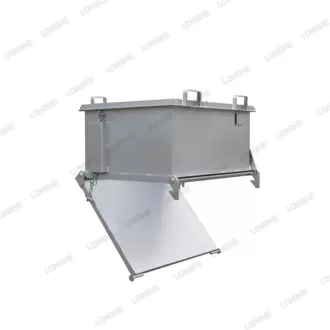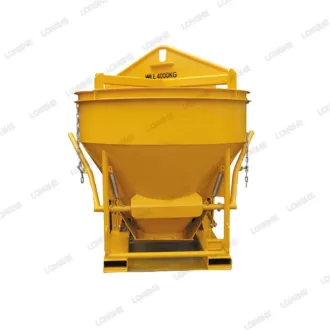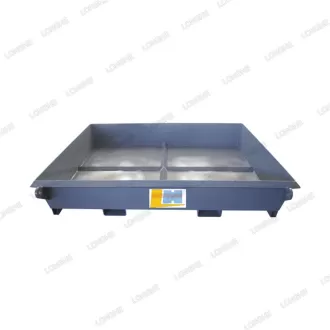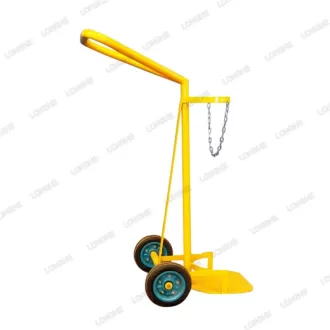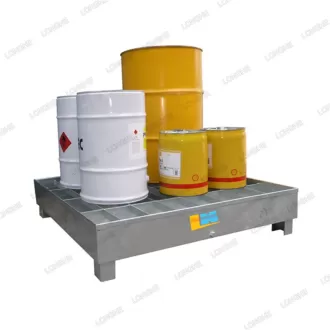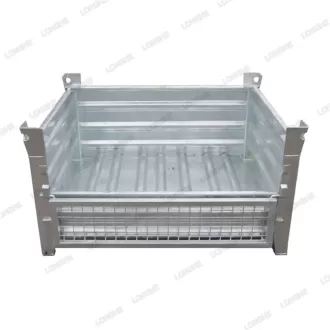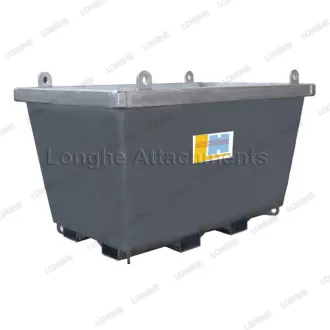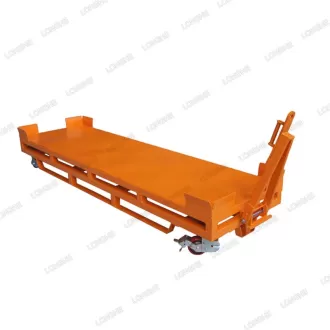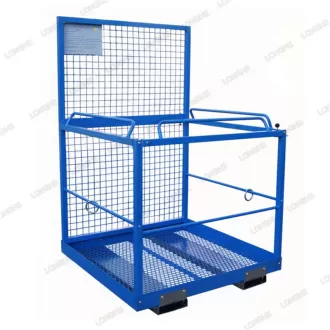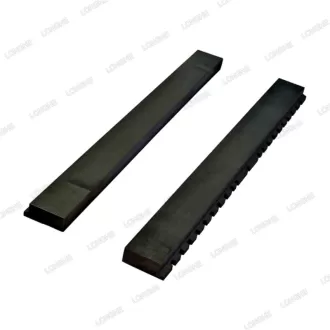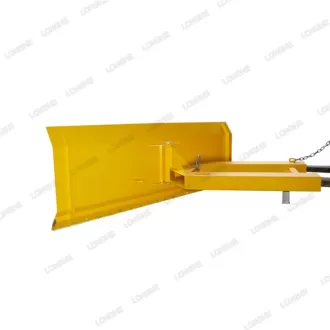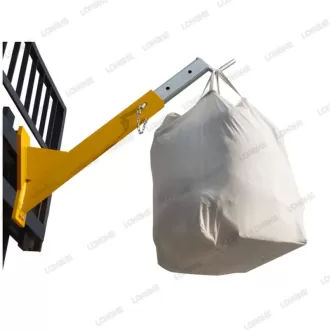What is an Overhead Crane?
In the simplest of terms, an overhead crane is a machine, or piece of equipment, that allows you to lift and move heavy materials from one location to another in a precise manner.
Overhead cranes transfer bulky loads from side to side or up and down. They move both vertically and horizontally. On the contrary, hoists lift items up and down only on the vertical axis. Additionally, an overhead crane is the structure and a hoist is mounted onto the crane (fixed or mobile).
Defining an Overhead Crane
There is no “one size fits all” approach to defining an overhead crane, as each crane is carefully designed and engineered for a specific purpose or application to meet a business's material handling needs.
Overhead cranes can be designed and built in various configurations, with components that can be swapped out or engineered to enhance capacity and performance. Some popular uses of overhead cranes include:
- Loading or unloading materials from a truck
- Moving materials around a facility more efficiently than a tow motor or manpower
- Flipping or pulling dies in and out of stamping machines at a manufacturing facility
- Feeding raw material into a machine at a manufacturing facility
- Moving pieces or parts down an assembly line in a controlled fashion
- Moving containers around a shipyard or railyard
In addition to simplifying these processes, there are two primary reasons a company would install an overhead crane or a series of cranes in their facility:
Efficiency:
Overhead cranes are more efficient than using a group of workers or tow motors to lift and move materials, capable of working up to 2-3 times faster. Manufacturers, mills, and warehouses can streamline their processes by introducing an overhead crane to automate the lifting, maneuvering, and unloading of materials.
Safety:
Overhead cranes enhance safety in manufacturing, assembly, or warehousing facilities. They can lift and move materials in extreme environments and handle corrosive or dangerous materials like hot metals and chemicals. Workstation or jib cranes can assist workers in moving heavy objects in a controlled manner, reducing repetitive motion injuries and muscle strains.
Other benefits to using an overhead crane system include:
Reduction in workplace accidents
Reduction of product or material damage
Improved workflow
Lowered costs
Green solution that reduces environmental impact
Overhead cranes have three main components:
Hoist: Controls vertical lifting and lowering
Trolley: Carries the hoist and moves horizontally across a bridge beam
Bridge beam: Linked to one or more horizontal girders that are supported at each end
Overhead cranes can move loads in multiple directions, such as across a rectangular area from side to side and backward and forward. For example, a construction worker can use an overhead crane to pick up a load in one area, move it along a rail system, and set it down in another area.
Each overhead crane is designed for a specific purpose or application to meet a business's material handling needs. Some common types of overhead cranes include:
Monorail: Provides lift and runway travel, but no side-to-side movement
Jib crane: Often used in a workstation environment, such as when picking materials off a pallet and moving them onto a table
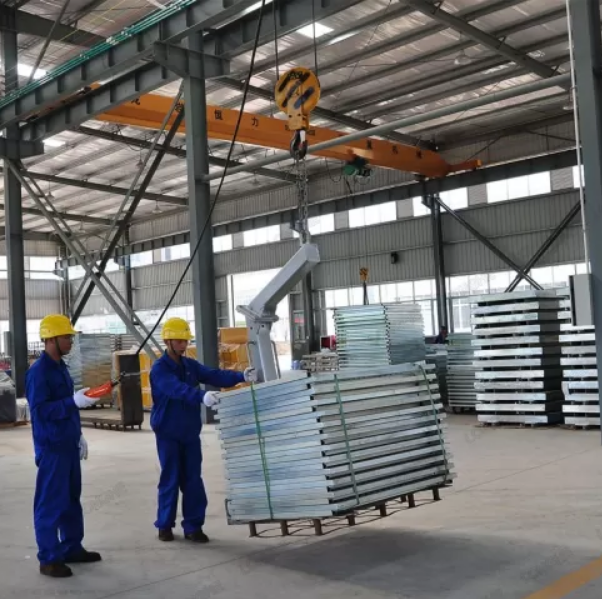
What are the Different Types of Overhead Cranes?
Bridge Cranes
A bridge crane is a type of crane that includes two overhead runways built into the building’s support structure. A single or double girder configuration, known as a bridge, moves the crane up and down the runways, and the trolley and hoist run side-to-side along the bridge. The trolley allows the operator to position the hoist and hook before raising or lowering a load.
Bridge cranes come in different configurations, including single girder and double girder designs, and the trolley and hoist can be designed to be top-running or underhung, depending on the building structure and lifting requirements.
- Single Girder: The bridge consists of one girder beam supported on each side by an end truck. The trolley and hoist are underhung, meaning they run on the bottom flange of the single girder. Single girder cranes are typically less expensive due to:
- Reduction in freight expenses
- Faster installation
- Simpler hoist and trolley design
- Lighter runway beams
- Double Girder: The bridge comprises two girder beams supported by an end truck on each side. The trolley and hoist run on a rail installed above or below the bridge girders. Double girder cranes are recommended for heavier-duty applications where the crane needs to handle heavier capacities and longer spans.
Bridge cranes are categorized based on their service, capacity, and environment into two types: Process and Modular cranes.
- Process Cranes: Built for specific needs, these heavy-duty cranes (mainly Class D, E, and F) are in constant or near-constant operation. Typically, they are top-running, double girder designs with built-in engineering to perform high-capacity lifts or repetitive tasks. Process cranes are found in places like automotive assembly plants, steel mills, container yards, and lumber mills, performing 10-20 lifts per hour at around 50-75% of their rated capacity.
- Modular Cranes: These cranes are typically found in smaller manufacturing facilities, mills, or machine shops. They feature a base-level hoist, trolley, and bridge, providing economical and affordable solutions for moving material through a facility. Usually Class C, modular cranes operate at around 40% capacity but can be upgraded to Class D with additional engineering if needed.
Gantry Cranes
A gantry crane is similar to a bridge crane, but instead of moving on suspended runways, it uses legs to support the bridge, trolley, and hoist. The crane legs travel on fixed rails embedded in or laid on top of the floor.
Gantry cranes are used when an overhead runway system cannot be incorporated. They are typically used in outdoor applications where full beams and columns cannot be installed or under an existing bridge crane system. Gantry cranes are common in shipyards, railyards, outdoor construction projects like bridges, and steel mills where overhead space is limited.
Monorail Cranes
Monorail cranes, most commonly found in production or assembly lines, use a trolley to carry the hoist along a single path. The trolley connects to an I-beam and runs along the flat surface on the bottom of the beam. These cranes move materials back and forth in a straight line or can follow a curved track with switches, branches, and changes in elevation. Monorail cranes are designed for lifts that do not require the side-to-side trolley movement provided by overhead or gantry cranes.
Jib Cranes
Jib cranes come in various styles and types but do not use a runway or track system. They can be stand-alone or column/wall-mounted, offering a wide range of capacities, heights, and spans.
Jib cranes are space-saving, economical, and ideal for maneuvering or moving items for assembly within a small area. They typically offer 180-360° of rotation, and even small ones can hoist several tons of material.
Workstation Cranes
Workstation cranes are designed to allow operators an ergonomic means of moving or lifting loads with limited effort in a smaller work area. These lighter-duty systems can lift materials from 150 lbs. up to 2 tons in capacity. They are designed for repetitive lifting, increasing worker productivity and workflow efficiency.
Workstation cranes can be freestanding or ceiling-hung and designed as top-running or under-running. Their versatility, customization options, and modular design make them appealing and expandable to meet various needs.




